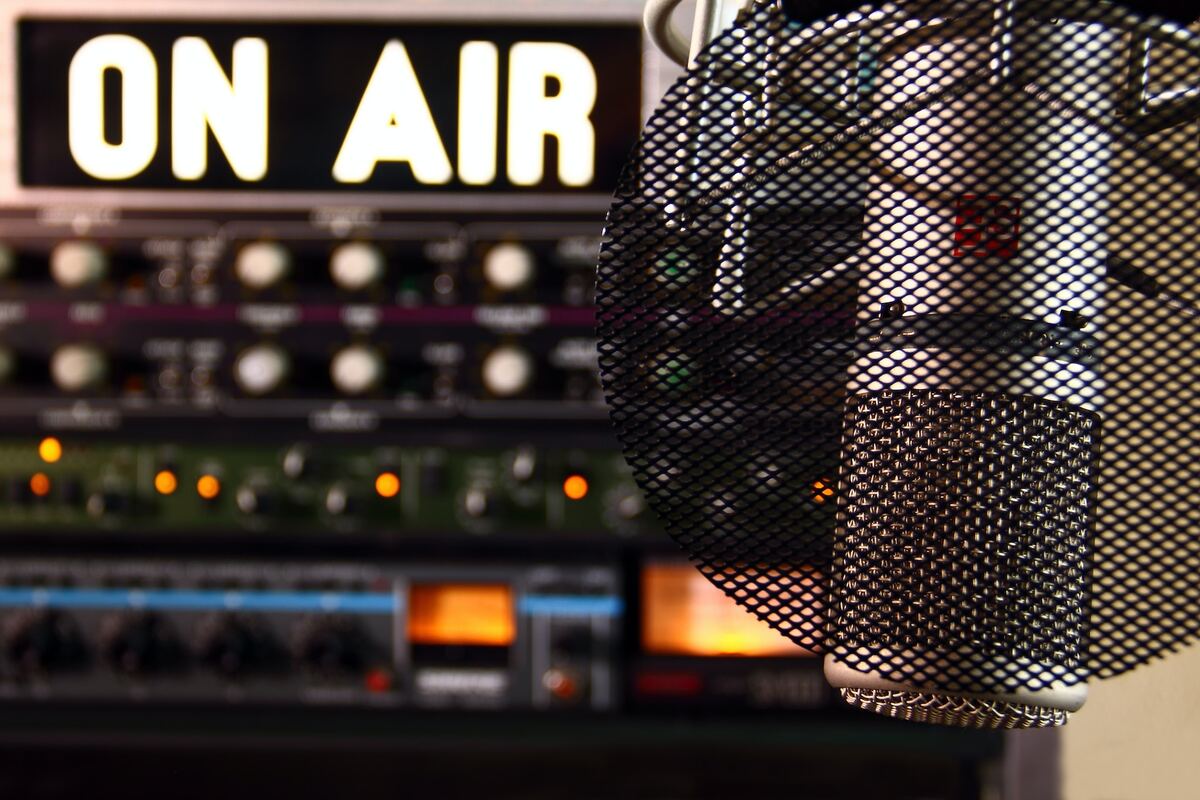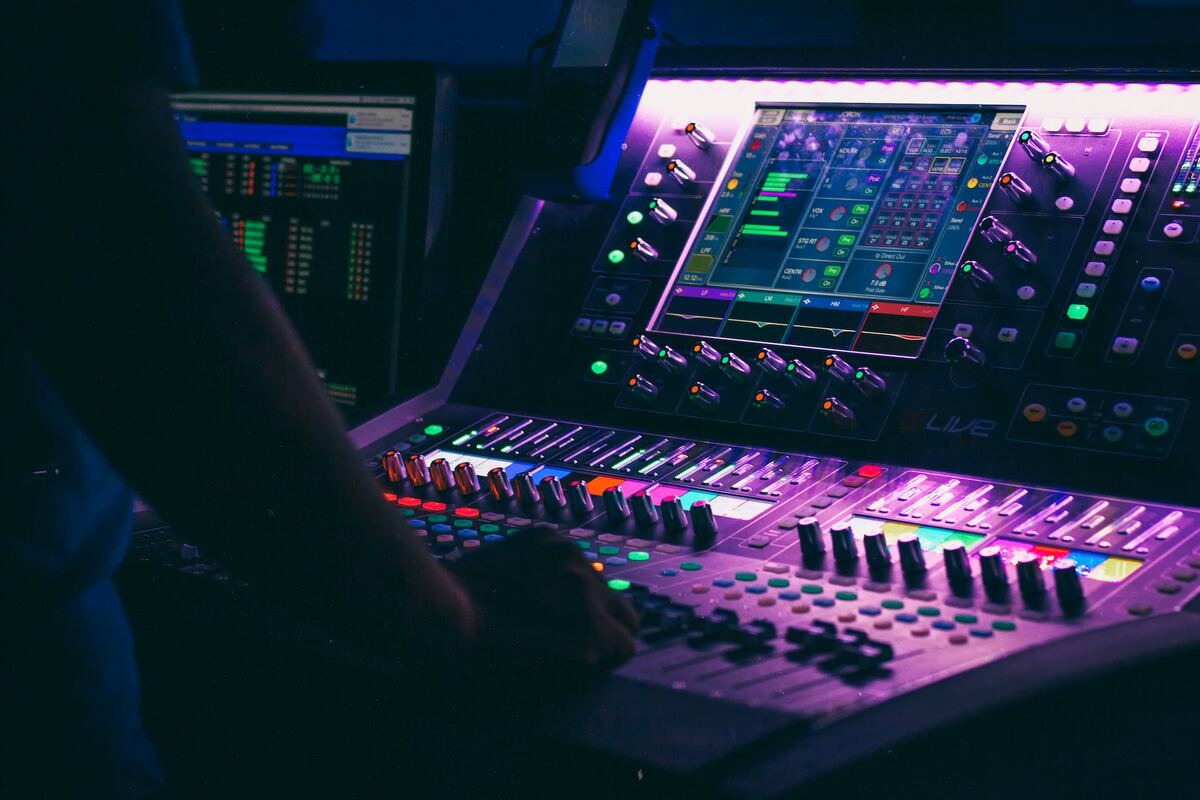Ever heard a tune on the radio that just blew your mind? A track so crisp, it’s like the artist is jamming out live right there in front of you? That’s what we call “radio-ready”—the epitome of professional sound. You see, not all tracks cut it in the brutal world of radio. Why is that? If you’re scratching your head, let’s dive into it.
What does radio ready mean? Simply put, it means a mix or master primed for airplay, boasting top-tier volume, clarity, and frequency response. In other words, it’s a sound so sick, even your demos will want to hop off.
What exactly does ‘radio ready’ mean?
Radio-ready means your mix or master is all teed up for radio broadcasting, meeting necessary technical standards like volume, clarity, and frequency response—it’s gotta sound good, after all! Now, you don’t just whip up a track in your PJs and expect it to be radio-ready. Nah, it’s a whole other level, my friends. A radio-ready track signifies a sound so professional, it could pass off as a top-charting hit.

Turns out, there’s a bit of a recipe here. To make sure your track is radio ready, you need to:
- Keep up a consistent volume throughout
- Balance the bass and treble
- Maintain clarity, make sure it’s not distorted or muddy
- Nail a wide frequency response
That’s the basics, but there’s more to it!
AKAI Professional MPK Mini MK3

AKAI Professional MPK Mini MK3
Does radio ready mean it will only sound good on the radio?
A ‘radio-ready’ track doesn’t just crush it on the airwaves—it’s gotta sound spectacular across all platforms, from Spotify to YouTube, and even good ol’ CDs. Yes, the standards were set according to radio broadcasts, but it pretty much translates to a professionally awesome sound on any platform.
Here’s the tough truth: just because your track is ‘radio-ready’, doesn’t mean it’ll be a chart-topper. Yes, it indicates that your track meets a certain professional standard, but there are hella other factors in play—a catchy melody, fresh lyrics, and let’s be honest, a bit of luck.
What makes a track radio ready?
Creating a radio-ready track begins with a well-crafted song featuring a catchy melody, meaningful lyrics, and an engaging arrangement. The next crucial step is high-quality recording, which generally means recording in a professional studio or a well-equipped home setup.
In the mix, the aim is to achieve clarity and balance so that each instrument and voice can be distinctly heard…
In the mix, the aim is to achieve clarity and balance so that each instrument and voice can be distinctly heard, with consistent levels and no unintended volume spikes or dips. The stereo field should be utilized effectively to add depth and width to the mix for a more immersive listening experience.
Dynamics processing is another key aspect, where tools like compressors and limiters manage volume levels and prevent distortion. Equalization (EQ) must be applied judiciously to balance the frequency content of a mix, ensuring it sounds good across a variety of playback systems.
The final mastering stage boosts the track’s loudness to be competitive on the radio. It’s also crucial to check for mono compatibility, as many radio stations still broadcast in mono. The track should ideally be around 3-4 minutes long with clean content suitable for all audiences, bearing in mind that different stations or markets may have varying standards.
Creating a radio-ready sound requires careful attention to various elements of song production, mixing, and mastering. Here are some general dos and don’ts to consider:
| Do | Don’t |
|---|---|
| DO focus on songwriting. A well-written song is the foundation of a radio-ready track. | DON’T rush the songwriting process. Take your time to develop your lyrics, melodies, and arrangements. |
| DO use high-quality recording equipment and software. This includes microphones, interfaces, and DAWs (Digital Audio Workstations). | DON’T use low-quality recording gear. Poor quality recordings will be difficult to polish in the mixing and mastering stages. |
| DO aim for a clean, clear mix. Each instrument and vocal should have its own space in the frequency spectrum. | DON’T overdo effects like reverb or delay. They can muddy your mix and make it sound amateurish if not used appropriately. |
| DO use compression and EQ to balance your mix and make it sound cohesive. | DON’T over-compress or over-equalize your mix. This can lead to a loss of dynamics and naturalness in the sound. |
| DO consider the stereo field. Panning instruments and vocals in the stereo field can help create a more immersive listening experience. | DON’T neglect mono compatibility. Many radio stations still broadcast in mono, so it’s essential that your mix sounds good in both stereo and mono. |
What is the ideal song format and labeling for radios?
Radio stations have diverse preferences when it comes to the format in which they want to receive music. Some might opt for CDs, others might require wav files or even prefer a link on platforms such as Spotify. These preferences can typically be identified through the radio station’s online submission forms, contacting the station directly, or reaching out to a station representative via email.
A critical aspect of submitting your music is clear and correct labeling. It’s crucial to include your artist’s name and the title of the track. As trivial as it sounds, many songs are disregarded due to ambiguous labeling. You want listeners to connect with your music instantly and be able to search for it later, so concise and clear information is essential.
Ideally, you should prepare your track in the following formats at the very least:
- A full track version in WAV format
- A full track version in MP3 format
- An instrumental version
- Separate stems (e.g., vocals, drums, guitar, synths) for potential future use
How do you make your song radio-friendly and suitable for different stations?
If your song includes explicit content, it’s critical to also prepare a clean version since many radio stations don’t accept explicit material. Therefore, researching each station or DJ to ensure you are delivering the appropriate version of your song is essential.

Your song should be a radio edit, which implies removing any superfluous audio that might not appeal to your intended audience, leaving only the catchy choruses and hooks for radio listeners to appreciate. This doesn’t mean you should sacrifice the integrity of your song for brevity; it’s merely a factor that radio programmers might consider when adding songs to their playlists.
How to achieve a radio ready sound in your home studio?
Producing a radio-ready track isn’t all just about marrying sick beats and dope lyrics—it’s about mastering your mix for dynamite quality. Trust me, Pro Tools and a solid audio interface can do wonders for your sound.
- Pick the right DAW: Yeah, GarageBand might be the easy way out, but if you’re serious about your sound, opt for a professional DAW like Pro Tools or Logic Pro.
- Learn to mix: Mixing is an art form, y’all. Learn to balance those elements so you have clarity between instruments and vocals.
- Mastering it right: Mastering is your magic touch—it’s all about bringing your mixed track to the peak of sonic quality.
If you want even more great tips and information, check out the video below.
Frequently Asked Questions (FAQ)
It’s a long and winding road to becoming a ‘radio-ready’ master, and naturally, you’ve got questions. Lucky for you, I’ve got answers. Let’s tackle some of the FAQs about making your track ‘radio-ready’.
Does a ‘radio-ready’ track need special equipment?
While having high-quality gear can help achieve a better sound, what’s more important is your mixing and mastering skills. You can make a solid, ‘radio-ready’ track with entry-level gear, but you gotta know how to use it right.
Does my genre impact if my track can be ‘radio-ready’?
No matter your genre, from heavy metal to soft jazz, your track can absolutely be ‘radio-ready’. The genre doesn’t dictate the technical quality of your track—that’s all on you.
Can I learn to make my track ‘radio-ready’ online?
Sure can! There’s a treasure trove of resources online—from video tutorials and audio engineering courses, to forums and communities filled with audio pros ready to share their wisdom. Just be prepared to put in the time and effort to learn.
Conclusion
There you have it, folks – the long and short of getting your track ‘radio-ready’. Who knew there was so much behind those tunes blasting on your radio, huh? Remember, in the world of audio, patience isn’t just a virtue, it’s a sound investment! Practice makes perfect, so I read and reply to every comment — let me know how your ‘radio-ready’ journey is going, and if you have any more questions. Don’t forget to share this post with your music buddies and check out the rest of my blog for more tips and tricks. Thanks for stopping by, keep on rocking!
Key Takeaways
This article covered what it means to be ‘radio-ready’ and how it impacts your music production journey. Here are some key takeaways:
- ‘Radio-ready’ refers to a mix or master suitable for radio broadcasting.
- Achieving a ‘radio-ready’ standard signifies a professional level of sound quality.
- Creating a ‘radio-ready’ track involves balancing various elements, including volume, clarity, and frequency response.
- You can accomplish a ‘radio-ready’ sound from your home studio with the right tools and techniques.
- Striving for a ‘radio-ready’ sound has its own set of advantages and disadvantages.















